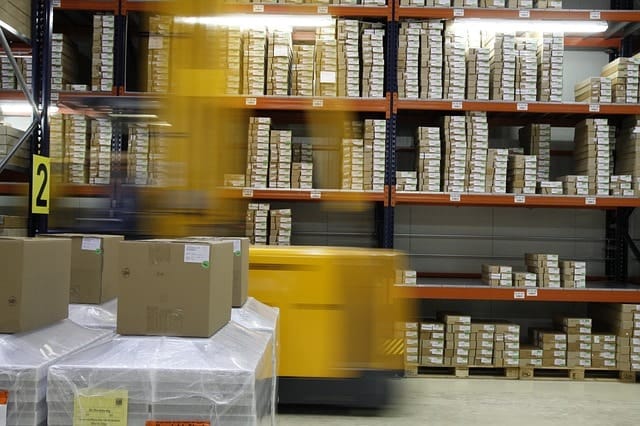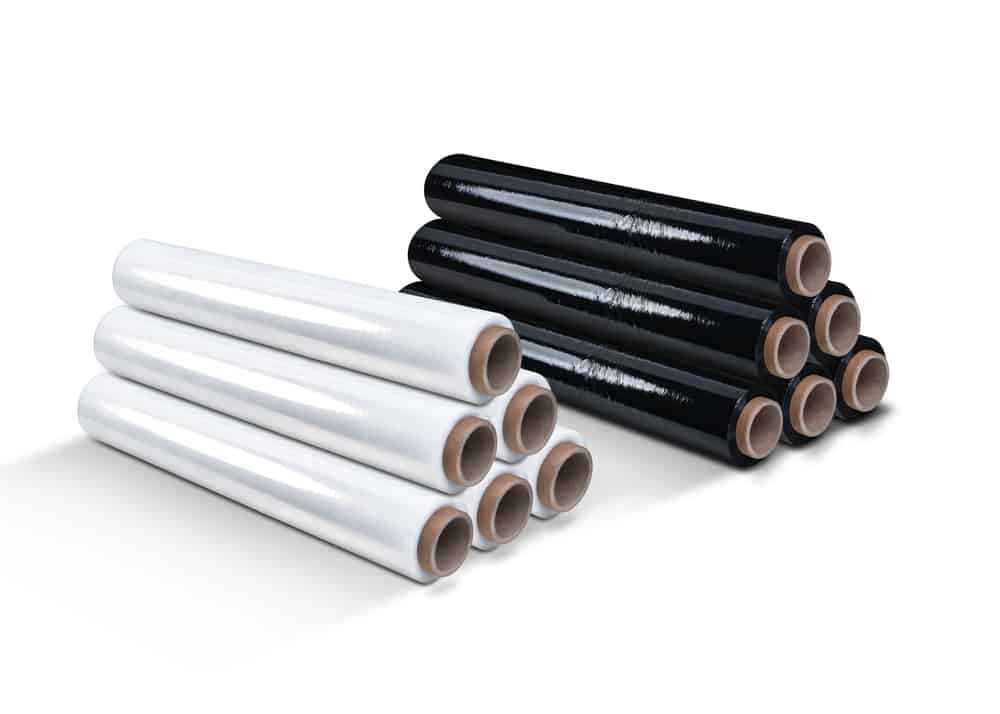Stretch film is one of the most popular materials for for packaging. It is not only used by people who work in warehouses, trade and transport on a daily basis. Stretch film It is also increasingly being used in other sectors - including home and agricultural. What else can this material be used for and how is it produced? We tell you about this in our text today.
What is stretch film?
Currently, there are several types of film on the market which serve for packaging various types of products. One of the most popular is stretch filmwhich is known as stretch. It is manufactured from polyethylene and is therefore a polyethylene film. The material is produced almost entirely from a special raw material, linear low density polyethylene (LPDE).
Stretch film is distinguished by its high stretchability, elasticity, thermoplasticity, waxiness, transparency and stickiness. The material is also tear-resistant and resistant to electrostatic discharge. It is thanks to these features that stretch film is perfect for packing and wrapping various objects. Thanks to this, you can be sure that the items wrapped in it will be safe. It is also worth knowing that unlike heat-shrinkable film, stretch does not shrink under the influence of temperature.
Stretch film is mainly produced in two basic types - film for manual packaging and film dedicated to automatic packaging machines. In the industry these two types are distinguished into: manual stretch film and machine stretch film.
The process itself production of stretch film is very expensive and quite complex. Specialised, expensive machinery is required to manufacture it. Bearing in mind that the material is made from such plastics as polyethylene, copolymer, polypropylene and fluorpolymers, it can be concluded that price stretch manufacture, will also be quite high.

Manufacture of stretch film
Stretch film is currently manufactured in two ways. The material is produced either by the blow moulding method (blown) or by the machine pouring method (cast).
Stretch blow moulding production
The blow moulding method (otherwise known as "blown"), involves the use of a resin. The resin is heated until it starts to melt and then blown in two different directions - crosswise and machine. This is a very time-consuming and complicated process. However, this is what makes the stretch film resistant to damage and punctures. Stretch produced using the blow moulding method will also be distinguished by its high adhesive properties. As mentioned, the manufacturing process itself is quite time-consuming. Much less film can be produced per hour than with other methods, making production costs just as high. However, it is important to remember that the film will be of high quality.
Once the resin is melted, the raw material must be cooled. Air is used for this purpose. Stretch film produced in this way will be very stretchy. It is worth bearing in mind, however, that it will also have a critical moment, and when exceeded - it may break. Stretch created by means of the blow-out method is very willingly used in the food and agricultural industry.
Production of stretch by machine casting
In the machine pour method, special slot dies are used to pour the raw material. It is then stretched and cooled by means of cooling rollers and extruders. The manufacturing process itself is considerably shorter than with the blow moulding method. However, this has its price. The product will be of slightly lower quality. Despite this, the stretch will still be very resistant to tears and punctures and extremely flexible.
Sometimes when producing stretch in this method, manufacturers use only polyethylene. Some admixtures of other plastics may also be added. With the machine casting method, suitable dyes can also be added. Thanks to the fact that we obtain a coloured film, we will be able to protect the packaged product against UV radiation, among other things. Thanks to the opacity of the stretch film, you can also guarantee yourself a little more privacy.
By using this method in the production of stretch film, greater efficiency can be achieved during its manufacture. Thanks to this, the film which will be created using this method will be cheaper. The film which is formed by the machine casting method is mainly used for wrapping pallets.

This article has been produced in collaboration with SEO freelancer - Paweł Wróblewski
Types of stretch film
To choose the right stretch film, you need to know that they differ in individual properties. Therefore, even before the purchase, it is worth getting acquainted with specific types of film. Thanks to this, we will choose such a material which will suit our needs and the way we want to pack a specific product. Stretch films differ in sizes, colours, stretchability and thickness.
Manual stretch film
This is ideal for those wishing to transport a particular commodity over a longer distance. This film is characterised by high resistance to abrasion. It is also flexible and strong. It has a special inner adhesive layer to stabilise the load even better.
Handmade stretch film can come in a variety of colours, although black is the most common. This will ensure that the goods transported are discreet. Three-layer polyethylene film will also be a kind of protection against thieves. Thanks to its high resistance to damage, they will not get to the transported goods so quickly. It is also worth knowing that hand-made stretch film is also suitable for packing sharp edges. It is resistant to low temperatures, as it is produced using the blow-out method. It can stretch up to 150% - in any direction.
This film, however, has the smallest thickness (10-40 micrometres) and is best suited to hand-packing.
Machine-made stretch film
However, if our products will be transported on pallets, for example, it is worth taking an interest in machine wrap. It is used for wrapping goods with the use of machines. Both semi-automatic and automatic wrappers may be used for this purpose. Machine stretch film is suitable for goods which are heavy, but also resistant to deformation. There are three types of this material, which is divided according to the degree of stretch. We have standard film (120%-150%), power film (200%-250%) and super power film (300%-350%).
As with manual stretch films, machine stretch films can also be supplied in a variety of colours. The material is strong and resistant to abrasion. It is even suitable for goods which have sharp edges.

Application of stretch film
Foil polyethylene is most often used in transport. It is used to stabilise goods, and it is not uncommon to stretch even entire pallets. Thanks to this we can be sure that the products being shipped will be safe and will not be exposed to damage or atmospheric factors. However, stretch foil more and more frequently appears also during renovations, when we want to protect e.g. furniture against damage.
Farmers use stretch film to wrap animal feed and silage. It can also be used to protect plants for the winter. When growing oyster mushrooms, champignons and other mushrooms, two-coloured stretch film is also used. It can also be used to regulate the vegetation period.
Stretch film can also be found more and more frequently in... cosmetics! It is used for hair care. It makes it easier for the scalp to absorb the natural oils and this is due to the fact that the foil ensures the right, constant temperature.
The film also has a UV stabiliser. This makes it ideal for transporting medicines and cosmetics, i.e. products that are particularly exposed to harmful rays. Experts also point out that it is also an ideal ingredient for recycling.
We invite you to contact the Polish stretch film manufacturer - Twplast.
